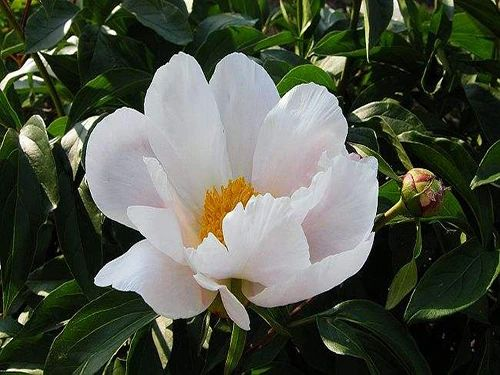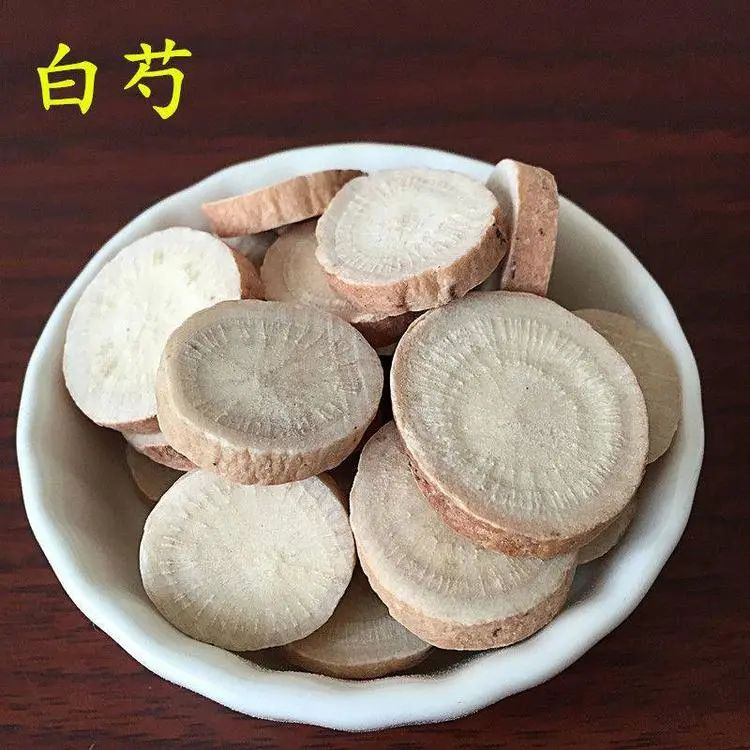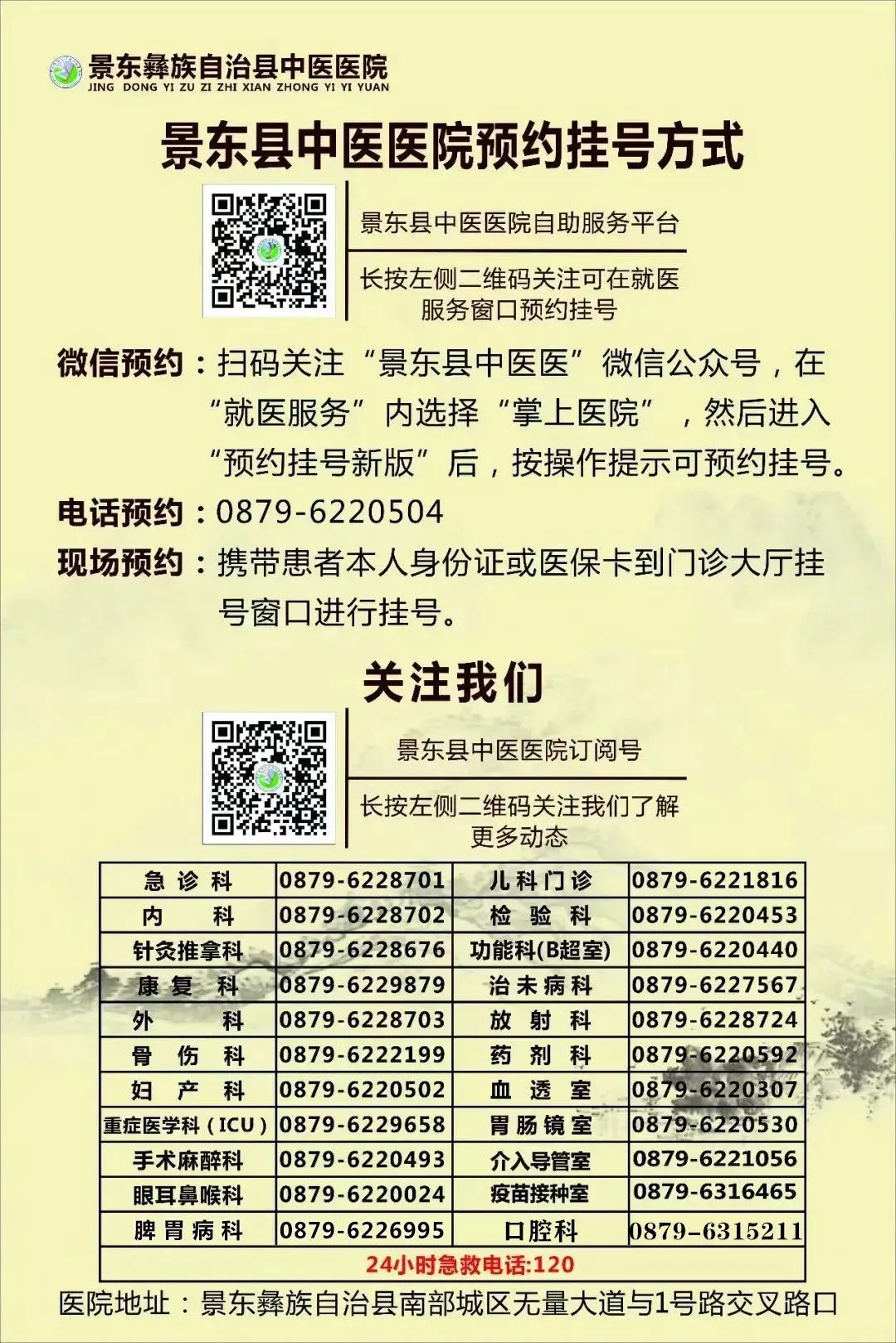
Click the blue words to follow us

Inheriting the essence of Traditional Chinese Medicine (TCM) and spreading TCM culture
Bai Shao (White Peony)

【Scientific Name】Bai Shao
【Alias】Shao Yao, Bai Shao Yao, Jin Shao Yao.
【Properties and Channels】Nature is slightly cold, taste is bitter and sour, enters the Liver and Spleen meridians.
【Functions and Indications】Used for chest and abdominal pain, dysentery with abdominal pain, spontaneous sweating, night sweats, Yin deficiency with heat, irregular menstruation, metrorrhagia, and leukorrhea.
【Preparation】Take the raw material, remove impurities, separate into large and small pieces, wash clean, soak until semi-transparent, take out and moisten until fully transparent, slice thinly, and dry. Sift out fragments.

【Common Usage】Internal use: decoction, 5-15g; or in pills or powders. Large doses can be used at 15-30g.
【Common Dietary Therapy】
1. Pain Relief CongeeIngredients: 120g Huai Shan Yao (Chinese Yam), 12g fried Bai Shao, 6g Chen Pi (Dried Tangerine Peel), 6g Fang Feng (Siler), appropriate amount of brown sugar.Method: Grind Huai Shan Yao into powder, boil with the decoction of Bai Shao, Chen Pi, and Fang Feng, then add brown sugar to consume. Effect: Soothes the liver, tonifies the spleen, relieves pain and diarrhea.
2. Bai Shao and Goutweed Melon Soup
Ingredients: 2 qian (10g) Bai Shao, 2 qian (10g) Gou Teng (Uncaria), half a jin (250g) winter melon.
Method: Boil Bai Shao and Gou Teng in water for 20 minutes, then add winter melon and continue to cook until the melon is tender, season to taste.
Effect: Calms pain and irritability caused by prolonged use of hands, alleviates dizziness.
3. Chai Hu, Bai Shao, and Dan Pi Stewed Lean Meat
Ingredients: 6g Chai Hu (Bupleurum), 6g Dan Pi (Moutan Root), 10g Bai Shao, 30g lean pork, appropriate seasonings.
Method: Wash Chai Hu, Dan Pi, and Bai Shao, stew with lean meat until tender, add seasonings to taste. Consume soup and meat.
Effect: Soothes the liver, relieves depression, and clears heat.
【Legend】
Bai Shao is the dried root of the Peony plant, known for nourishing blood and calming the spirit, relieving pain, and stabilizing Yin. It is used for irregular menstruation, abdominal pain during menstruation, metrorrhagia, spontaneous sweating, night sweats, and pain in the sides and abdomen. Peony is a traditional famous flower in China, historically praised as the “Flower Minister” and “Queen of Flowers.” A poet from the Song Dynasty wrote: “Among all flowers, the peony is ranked first, and Bai Shao second, hence the peony is called the king of flowers, and Bai Shao the minister of flowers.”
The origin of Bai Shao is linked to the legendary physician Hua Tuo. It is said that during the Eastern Han Dynasty, Hua Tuo cultivated medicinal herbs in his backyard, built a medicinal pool, and established a pharmacy, widely teaching the cultivation and processing techniques of medicinal materials. He would carefully taste each herb to understand its properties before using it on patients. One day, a traveler gifted him a peony plant, which he planted in front of his house. After tasting the leaves, stem, and flowers, he found it ordinary and without medicinal properties, so he did not use it for treatment.
One night, while reading under the lamp, Hua Tuo suddenly heard a woman’s crying. He looked up to see a beautiful woman in the moonlight, seemingly aggrieved, weeping. Curious, he went outside but found no one, only the peony plant where the woman had stood. Hua Tuo thought: Could it be that the plant was the woman? He looked at the peony flower, shook his head, and muttered, “You have no remarkable features. How could you be used as medicine?” He returned to his reading. However, he soon heard the crying again and went out to find the same scene repeated.
Hua Tuo found it strange and woke his sleeping wife, recounting the events. His wife looked at the flowers and herbs outside and said, “Every plant in your hands becomes a good medicine, saving countless lives. Perhaps this peony truly has its use; do not dismiss it.” Hua Tuo replied, “I have tasted hundreds of herbs, and their properties are clear to me. I know what to use and what not to use, and I have not missed anything. I have tasted the flower, leaves, and stem of this peony, and it truly cannot be used as medicine. How can I say I have wronged it?” His wife, seeing his impatience, did not press further.
Days later, Hua Tuo’s wife experienced metrorrhagia and abdominal pain, and no medicine was effective. She secretly dug up the peony root and boiled it to drink. Within half a day, her abdominal pain subsided. She told her husband about it, and from then on, Hua Tuo realized he had indeed wronged the peony. Later, he conducted detailed experiments on Bai Shao and discovered it not only stops bleeding and invigorates blood but also has analgesic, nourishing, and menstrual-regulating effects.
【Precautions】
Not suitable for use with Li Lu (Veratrum) and should be used cautiously in cases of cold abdominal pain and diarrhea.
(Some content sourced from the internet; if there are any infringements, please contact for removal)
Editor: Yang Zhonghai Proofreader: Yang Juan
Reviewer: Yang Wenzhong


